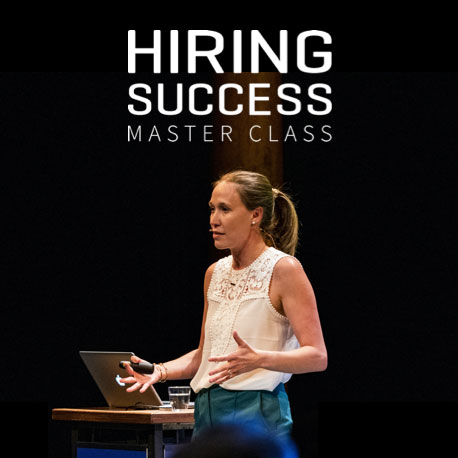Get creative with your Talent Acquisition management using your CRM. On-demand talent pools are closer than you think according to Tim Pröhm VP of Digital Product Development at KellyOCG.
- The case for on-demand talent
- Taking back control of talent
- Talent communities
- CRM technology is the backbone of your talent management
- Get started
When I sat down to write this blog, organizations were preparing to rebound — confident with the promise of reinstated budgets, additional resources, and rehired talent. Companies were finding ways to keep talent engaged for when they would eventually bring them back full-time. One of our customers, for example, launched a sophisticated talent engagement strategy that created a continued feeling of belonging for mission-critical, furloughed workers during the early stages of the pandemic.
Things have shifted, though. We’re hearing from customers how hard it’s been to predict longer-term business requirements, which makes it difficult to identify the skills they’ll need in the next 3-6 months. And, there’s still a lot of work to be done trying to upskill their current workforce.
On top of that, they’re being asked to do even more, with less. For many organizations, creativity and experimentation— embracing remote work, leaning into technology and hiring on-demand talent — have enabled them to keep moving forward.
The case for on-demand talent
Work still needs to get done. Budget restrictions have encouraged — maybe even forced — hiring managers to consider on-demand talent (that is to say, workers who are not full-time employees), more so than they might have previously. On-demand talent is known for being highly skilled, cost-effective, outcomes-focused, and comfortable on the fly. And many prefer working remotely.
Organizations have traditionally looked externally to source on-demand talent, whether through staffing agencies, with MSPs, or human cloud platforms. These resources not only give hiring managers access to broader talent pools but assume a lot of the activities in the hiring process.
Many organizations want to take back some control over their talent process.
And while there’s a laundry list of advantages to relying on external solutions, many organizations want to take back some control over their talent process.

Taking back control of talent
The main reason companies want to regain control over their talent acquisition process is tied to culture.
Say I’m a hiring manager. I have recently hired Sarah, a graphic designer, from a freelance platform to create infographics for my company’s upcoming product launch. As part of this 3-month project, she’ll need to understand how the product was built as well as each team member’s role in the deliverable. That institutional knowledge takes time to learn.
For the sake of the project timeline, I would prefer to rehire the full-time graphic designer I laid off earlier who already has the institutional knowledge. With budget cuts, that’s not an option.
I’d rather build a pool of candidates — a talent community — who know the culture and inner-workings of my organization.
I could hire a freelancer for my short-term needs, but I’d rather build a pool of candidates — a talent community — who know the culture and inner-workings of my organization. (A good example of this is 99designs Select.)
If Sarah, instead, came from an internal pool of candidates who are engaged and enjoy working for my company, I could redeploy her for a similar project after her first assignment ends with little to no onboarding.
Talent communities
Talent communities are a great answer to having the ability to tap into talent when, where, and for how long they’re needed.
Organizations are imagining how they can replicate, internally, the integrity, growth, and reputation of these talent marketplaces…
If you think about it, gig platforms are essentially external talent communities that share common characteristics, work styles, and/or skill sets. Organizations are imagining how they can replicate, internally, the integrity, growth, and reputation of these talent marketplaces by exploring what that infrastructure might look like.
I’ve seen companies use software technology to keep talent engaged until the opportunity to rehire them becomes available. Some have even built in-house human cloud platforms of employee alumni they can tap as projects arise. This allows for full control over the hiring process, free from onboarding headaches.
If hiring managers continue to go that route and look for ways to take back control of their talent management process, it has to start with their Candidate Relationship Management (CRM) technology.

CRM technology is the backbone of your talent management
What technology can give you a better snapshot into your current workforce than your CRM? And what about the potential workers you could have, based on the roles you need to fill? Your CRM is the backbone of your talent management function because of the data it houses.
CRM technology allows organizations to actively manage their workforce and track all relevant touchpoints to better develop, nurture and engage full-time and contingent employees.
As companies increasingly rely on talent outside their organization to get work done, having full visibility into the entire workforce — “total talent visibility” — is critical.
Today, many organizations track this information in their Human Resource Information System (HRIS), but external, contingent talent data isn’t usually included. But, as companies increasingly rely on talent outside their organization to get work done, having full visibility into the entire workforce — “total talent visibility” — is critical. And to do that, the CRM technology needs to live and be integrated seamlessly into all the systems used to track talent data — like an Applicant Tracking System (ATS), HRIS, Vendor Management System (VMS), and even procurement.
CRM technology is an investment that returns major dividends for organizations that want to hire better, faster. The ability to lean on your CRM to create internal and external talent pools, filled with all worker types (full-time, contingent, and freelance), saves money on job board fees and improves conversion efficiency because candidates are already engaged. All this comes together to increase hiring velocity, the number of people hired on-time. When you know you can fill needs when you need them then you can start being strategic.
Closing thoughts
There’s a lot of great talent out there, talent that’s available now and can work flexibly. Hiring on-demand talent can help maintain productivity while managing cost and contributing to business growth. External sources like gig platforms, MSPs, or staffing agencies are some of the best sources to find that talent.
Even still, if you want to take your talent management process in-house, consider building an internal talent community, anchored from your CRM. Pre-qualified talent pools are more likely to be a culture fit and move through the screening and hiring process quicker.
To get started:
- document a detailed summary of all your current IT systems that track talent data (internal and external talent) to better understand the current system architecture and how they rely on one another
- involve all necessary stakeholders to create your company’s vision for total talent management, complete with an IT roadmap of core milestones that will allow you to track talent data holistically across multiple tools, systems, and technologies.
Want to learn more about how to use CRM to hire talent on-demand? Check out Lesson 8 of the Hiring Success Master Class: CRM & Talent Pools or see more insights on www.kellyOCG.com.

 Enroll in the Master Class & earn 6 SHRM credits
Enroll in the Master Class & earn 6 SHRM credits